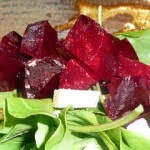 Patrick is occasionally pressed into service for Storey photo shoots, usually for marketing pieces. This photo actually wound up on the back cover of Storey's Barn Guide to Horse Handling and Grooming by Charni Lewis.
Patrick is occasionally pressed into service for Storey photo shoots, usually for marketing pieces. This photo actually wound up on the back cover of Storey's Barn Guide to Horse Handling and Grooming by Charni Lewis.Photo © Kevin Kennefick.
After several years of freelancing for Storey, I was hired in 2005 as a full-time editor to work mainly on equine titles. It took 20 years, but I had finally figured out what I wanted to be when I grew up! I’ve been horse crazy my whole life, and though we moved around a lot, I was able to ride on and off all the way through college. But then I got a job and a husband, and we had kids and moved to the suburbs, and I didn’t even think about riding for a long time. But when we moved to the Berkshires nearly 15 years ago, I looked around and saw equine opportunities everywhere. I started taking lessons again and leased several different horses, as I juggled kids, volunteer work, and part-time paid projects.
The only problem after I started at Storey was that I needed to have a horse of my own. I mean, really, what author was going to take me seriously if I didn’t? Besides, as I explained to my husband, after years of playing the field, so to speak, I was ready to settle down. And I knew just the fellow. For the past 18 months, I’d been riding a friend’s extra horse, and we had developed a good relationship. When she told me she had to sell him, I panicked. I didn’t want to buy just any horse; I wanted to buy this one.
When my husband asked what we’d do when I wanted to move on to a “better” horse, I pointed out that I’d stuck with him (my husband, that is) for all these years without wanting an upgrade and I expected this relationship to be a lifelong commitment as well. Patrick (I know, it’s a silly name for a horse, but it suits him) is a nine-year-old Arabian gelding. When I bought him, I sent out an electronic notice to friends and family announcing, “It’s a bay!” He’s got lovely manners and is fun to ride but is enough of a challenge to keep me learning all the time.
We do mostly trail riding, as I still keep him at my friend’s house where we don’t have an arena or even a round pen. But we can go right out onto a network of trails, a winding combination of steep and rocky paths with some great old logging roads. Our New England weather dictates how often I ride, but there’s nothing like being out on a crisp, clear fall day, trotting along a familiar trail with a couple of friends and leaving all our cares behind.
And while I don’t know if being a horse owner makes authors take me more seriously, I’ve worked with a number of wonderful ones over the past few years. I’ve learned a lot from Jessica Jahiel, who writes our Problem Solver series (check out her Web site: www.Horse-Sense.org). Most recently, I’ve had a lot of fun working with Jessie Haas on Horse Crazy and Elise Chand on The Parent’s Guide to Riding Lessons. The former will appeal to horse nuts of all ages, while the latter introduces the world of horseback riding to parents who may be wondering where their own little horse nut came from.
— Lisa Hiley, Editor



































